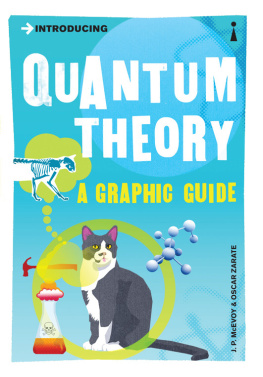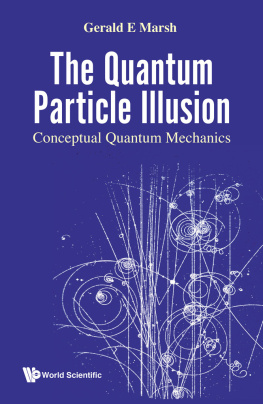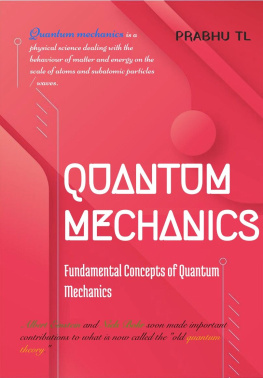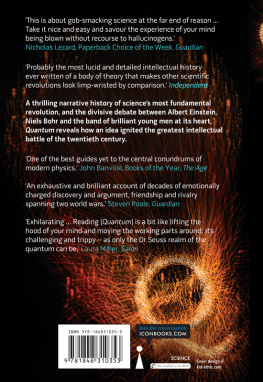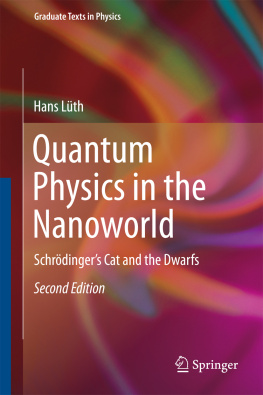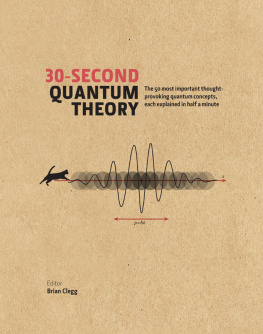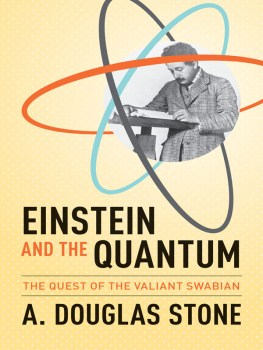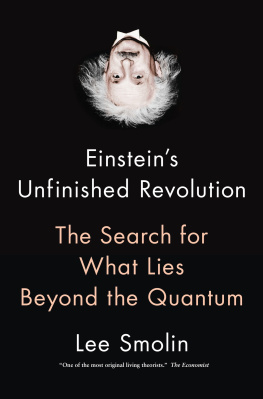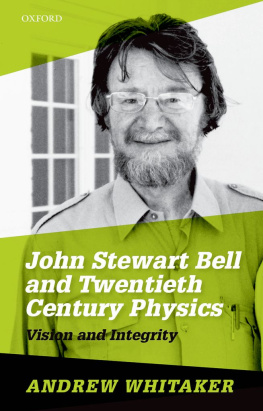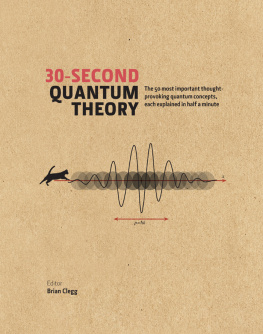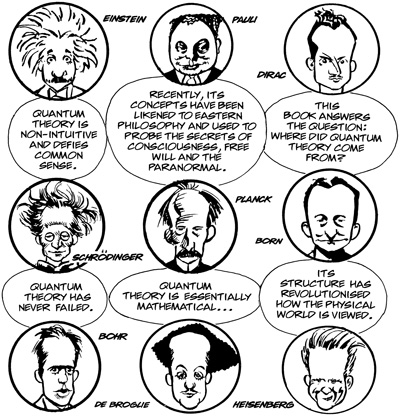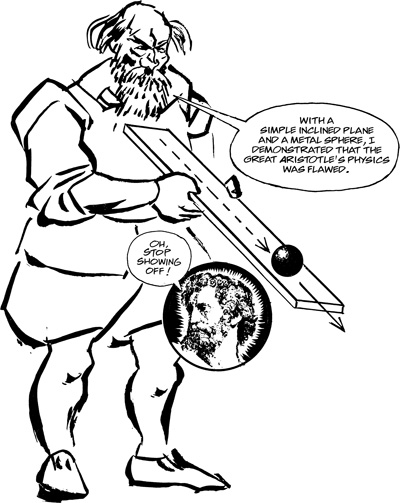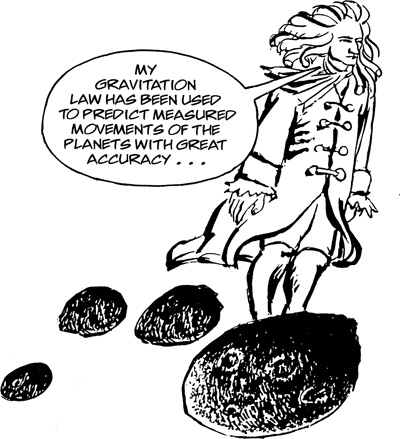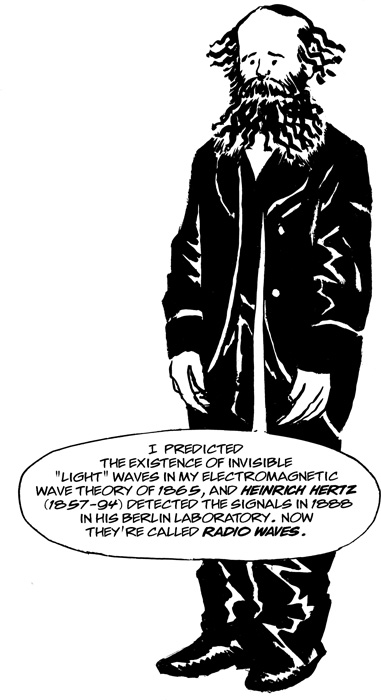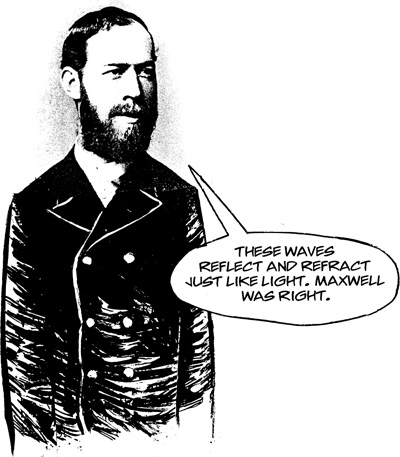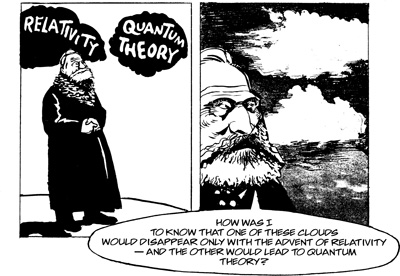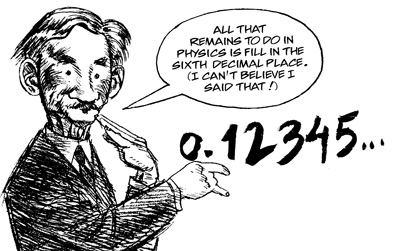
Published by Icon Books Ltd, Omnibus Business Centre, 3941 North Road, London N7 9DP
email:
www.introducingbooks.com
ISBN: 978-184831-757-4
Text and illustrations copyright 2013 Icon Books Ltd
The author and artist have asserted their moral rights.
Originating editor: Richard Appignanesi
No part of this book may be reproduced in any form, or by any means, without prior permission in writing from the publisher.
Contents
What is Quantum Theory?
Quantum theory is the most successful set of ideas ever devised by human beings. It explains the periodic chart of the elements and why chemical reactions take place. It gives accurate predictions about the operation of lasers and microchips, the stability of DNA and how alpha particles tunnel out of the nucleus.
QUANTUM THEORY IS NON-INTUITIVE AND DEFIES COMMON SENSE.
RECENTLY, ITS CONCEPTS HAVE BEEN LIKENED TO EASTERN PHILOSOPHY AND USED TO PROBE THE SECRETS OF CONSCIOUSNESS, FREE WILL AND THE PARANORMAL.
THIS BOOK ANSWERS THE QUESTION: WHERE DID QUANTUM THEORY COME FROM?
QUANTUM THEORY HAS NEVER FAILED.
QUANTUM THEORY IS ESSENTIALLY MATHEMATICAL...
ITS STRUCTURE HAS REVOLUTIONISED HOW THE PHYSICAL WORLD IS VIEWED.
Niels Bohrs presentation of quantum theory in 1927 remains todays orthodoxy. But Einsteins thought experiments in the 1930s questioned the theorys fundamental validity and are still debated today. Could he be right again? Is there something missing? Lets begin at the beginning...
Introducing Quantum Theory
YOU KNOW, ITS EASIER TO EXPLAIN QUANTUM THEORY TO AN ABSOLUTE BEGINNER THAN TO A CLASSICAL PHYSICIST.
YOURE KIDDING. WHATS THEIR PROBLEM, THESE CLASSICAL GUYS, WITH THE MODERN THEORY?
The problem is this. Just before the turn of the century, physicists were so absolutely certain of their ideas about the nature of matter and radiation that any new concept which contradicted their classical picture would be given little consideration.
Not only was the mathematical formalism of Isaac Newton (16421727) and James Clerk Maxwell (183179) impeccable, but predictions based on their theories had been confirmed by careful detailed experiments for 4 many years. The Age of Reason had become the age of certainty!
Classical Physicists
What is the definition of classical?
By classical is meant those late 19th century physicists nourished on an academic diet of Newtons mechanics and Maxwells electromagnetism the two most successful syntheses of physical phenomena in the history of thought.
WITH A SIMPLE INNCLINED PLAVE AND A METAL SPHERE, I DEMONSTRATED THAT THE GREAT ARISTOTLES PHYSICS WAS FLAWED.
OH, STOP SHOWING OFF!
Testing theories by observation had been the hallmark of good physics since Galileo (15641642). He showed how to devise experiments, make measurements and compare the results with the predictions of mathematical laws.
The interplay of theory and experiment is still the best way to proceed in the world of acceptable science.
Its All Proven (and Classical)...
During the 18th and 19th centuries, Newtons laws of motion had been scrutinized and confirmed by reliable tests.
MY GRAVITATION LAW HAS BEEN USED TO PREDICT MEASURED MOVEMENTS OF THE PLANETS WITH GREAT ACCURACY.
I PREDICTED THE EXISTENCE OF INVISIBLE LIGHT WAVES IN MY ELECTROMAGNETIC WAVE THEORY OF 1865, AND HEINRICH HERTZ (185794) DETECTED THE SIGNALS IN 1888 IN HIS BERLIN LABORATORY. NOW THEYRE CALLED RADIO WAVES.
THESE WAVES REFLECT AND REFRACT JUST LIKE LIGHT. MAXWELL WAS RIGHT.
No wonder these classical physicists were confident in what they knew!
Fill in the Sixth Decimal Place
A classical physicist from Glasgow University, the influential Lord Kelvin (18241907), spoke of only two dark clouds on the Newtonian horizon.
HOW WAS I TO KNOW THAT ONE OF THESE CLOUDS WOULD DISAPPEAR ONLY WITH THE ADVENT OF RELATIVITY AND THE OTHER WOULD LEAD TO QUANTAM THEORY?
In June 1894, the American Nobel Laureate, Albert Michelson (18521931), thought he was paraphrasing Kelvin in a remark which he regretted for the rest of his life.
ALL THAT REMAINS TO DO IN PHYSICS IS FILL IN THE SIXTH DECIMAL PLACE. (I CANT BELIEVE I SAID THAT!)
The Fundamental Assumptions of Classical Physics
Classical physicists had built up a whole series of assumptions which focused their thinking and made the acceptance of new ideas very difficult. Heres a list of what they were sure of about the material world...
1) The universe was like a giant machine set in a framework of absolute time and space. Complicated movement could be understood as a simple movement of the machines inner parts, even if these parts cant be visualized.
2) The Newtonian synthesis implied that all motion had a cause. If a body exhibited motion, one could always figure out what was producing the motion. This is simply cause and effect, which nobody really questioned.
3) If the state of motion was known at one point say the present it could be determined at any other point in the future or even the past. Nothing was uncertain, only a consequence of some earlier cause. This was determinism.
4) The properties of light are completely described by Maxwells electromagnetic wave theory and confirmed by the interference patterns observed in a simple double-slit experiment by Thomas Young in 1802.
5) There are two physical models to represent energy in motion: one a particle, represented by an impenetrable sphere like a billiard ball, and the other a wave, like that which rides towards the shore on the surface of the ocean. They are mutually exclusive, i.e. energy must be either one or the other.

